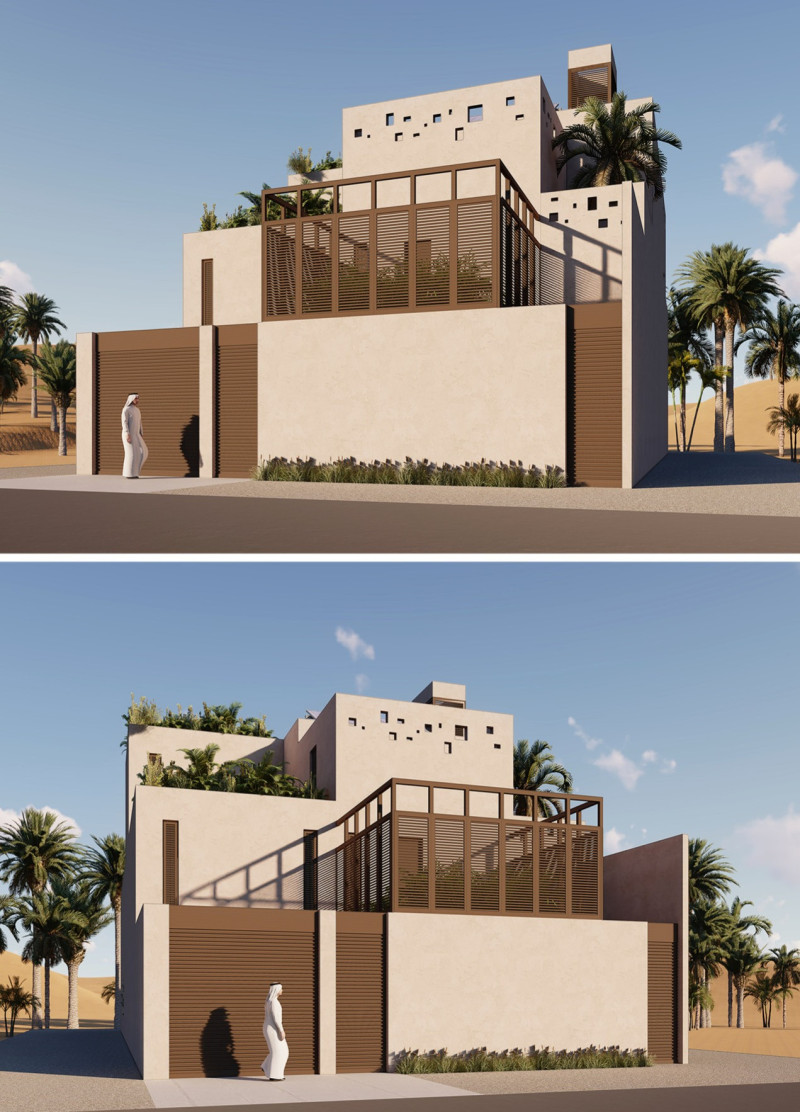5 key facts about this project
At its core, the architecture represents a harmonious relationship between built and natural environments. The design integrates seamlessly with its surroundings, acknowledging the local climate, landscape, and cultural nuances while providing a welcoming atmosphere for users. The project's primary function is to serve as a multi-use facility, accommodating various activities that promote community cohesion. This facility not only responds to the needs of its users but also enhances the public realm by creating inviting spaces for gathering, learning, and recreation.
Distinctly, the architectural design features an open layout that encourages fluid movement and interaction. The arrangement of spaces has been meticulously planned to foster connectivity, allowing for both public and private interactions. Key areas within the project include communal gathering spaces, flexible meeting rooms, and tranquil outdoor areas, all designed to cater to diverse activities and preferences. The integration of natural light is a significant design consideration, with large windows and skylights strategically positioned to illuminate interiors and reduce reliance on artificial lighting. This attention to daylighting not only enhances the aesthetic experience but also contributes to energy efficiency.
The material palette is another noteworthy aspect of the project. The architects have chosen locally sourced materials that complement the environment while promoting sustainability. This includes responsibly harvested wood, durable stone, and innovative glass products that provide thermal performance and visual clarity. The texture and color of these materials have been carefully selected to reinforce the building's connection to the landscape, creating a coherent visual dialogue between the architecture and its context.
An essential feature of this architectural project is its commitment to sustainability. The design incorporates various green technologies, such as solar panels and rainwater harvesting systems, which contribute to its energy independence and environmental responsibility. Furthermore, the building envelope is designed to optimize insulation and reduce energy consumption, addressing the growing importance of sustainable practices in architecture. This approach not only minimizes the carbon footprint but also educates users about the significance of environmental stewardship.
Unique design approaches are evident throughout the project, showcasing an innovative use of space and materials. By employing modular elements, the architects have created adaptable areas that can evolve over time to meet changing community needs. This flexibility is fundamental in a world where the demands on space are constantly shifting. The design celebrates this adaptability, allowing the architecture to remain relevant and functional through various phases of its lifecycle.
The relationship between the interior spaces and the exterior environment is also carefully considered. Landscaped areas are incorporated into the design, promoting a sense of tranquility and connection to nature. These outdoor spaces not only serve as extensions of the interior but also act as vibrant gathering spots that encourage outdoor activities and engagement with the natural surroundings.
This architectural project stands as a testament to thoughtful, community-oriented design that embraces both functionality and a deep respect for the environment. The decisions made throughout the design process reflect a commitment to creating spaces that are not only aesthetically pleasing but also promote a positive user experience and encourage sustainable practices. For those interested in exploring the intricate details and design methodologies further, reviewing the architectural plans, sections, and ideas behind this project will provide valuable insights into its comprehensive design narrative.


 Mohamad Hamza Ahmad Selim
Mohamad Hamza Ahmad Selim 























